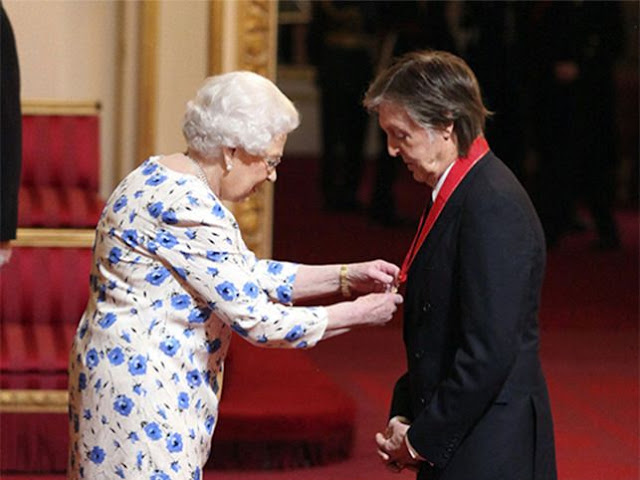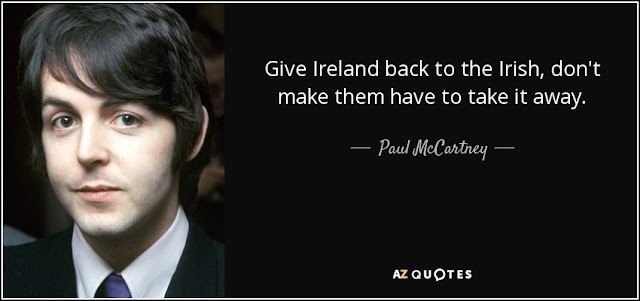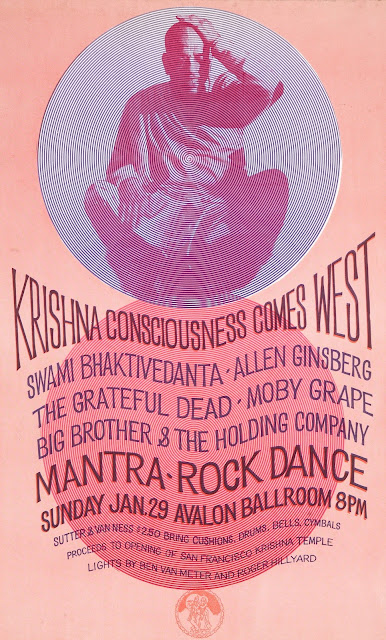Harvey Cohen designed this psychedelic poster for the Mantra-Rock Dance in San Francisco.
There were a lot of threads to
the youth culture being woven on the
streets of San Francisco—the older,
now established Beats finding new
followers for their expressions of alienation,
spiritual quest, and rebellion through art and poetry; a
ramped-up music scene revolving around a bunch of local bands inventing a new American
rock & roll sound; a quasi-anarchic radicalism spreading from the Anti-Vietnam
War movement and near-by college
campuses; the introduction of cheap, free, and then legal LSD and other hallucinogens
plus wide spread availability of Mexican
marijuana; the sexual revolution made possible by the pill; a flood of teenage
runaways and throwaways living
on the streets often engaging in virtual or real prostitution to survive; the large Hells Angels motor cycle club with their sometimes violent
culture; and a community of spiritual
seekers drawn to a range of mostly Eastern
Religions and cults.
All these threads seemed to come
together on January 29, 1967 for an event at the Avalon Ballroom called The
Mantra-Rock Dance. In retrospect it
is remembered as “the ultimate high” and as “the major spiritual event of the
San Francisco hippie era.” It was one
intense, cathartic night that participants thought opened a door
to a new future.
It started simply enough as just
another local benefit. All sorts of local San Francisco organizations and causes raised money and awareness with benefit concerts held at
various halls and venues, often ballrooms built to accommodate big bands. Local rock bands had been building followings
for years starting out at benefit shows.
Some had gone on to play at Bill
Graham’s Fillmore West for cash
money, had signed recording
contracts with major labels, and
were now national acts verging on super stardom. But these same big acts still lived in
the community and feeling connected to it. Even the biggest could be lured back
to a benefit show for a good cause in front of the fans that first boosted their careers.
Swami Prabhupada with American devotees.
So it was not without hope that Mukunda
Goswami, the former Michael
Grant and a Reed College graduate and jazz musician, decided
to have a concert to raise funds and publicize the new International Society for Krishna
Consciousness (ISKCON) West Coast Center and Temple in the heart of the Haight-Ashbury counter cultural
community.
A.
C. Bhaktivedanta Swami Prabhupada,
usually referred to as simply Prabhupada, was a guru in a school of Vaishnavite
Hinduism which was one of the many strains of the traditional Indian religion and which took the Bhagavata
Purana as a central scripture and veneration of the god Krishna. He was pious, scholarly, and respected
by Western religious scholars
like Harvey Cox. He took it as his mission to bring
this traditional form of Hinduism to the West, founding ISKCON and his first
temple in New York City in 1965.
Swami Prabhupada in turban and dark robes at the 1893 Parliament of World Religions in Chicago introduced Americans to Yoga and and sparked a new interest in Eastern religious practice.
Prabhupada took advantage of rising
interest in Eastern religions fostered by both the Beat movement and liberal theologians. Interest in Hinduism in this country dates to
Ralph Waldo Emerson who studied
early translations of the Bhagavad Gita and adapted from it
many of the more mystical aspects of his Transcendentalism including his central idea of an Over soul.
In 1893 Swami Vivekananda created a sensation at the World Parliament of Religions held in
conjunction with the Columbian
Exposition in Chicago introducing
yoga to this country. His books became best sellers and the
practice of yoga spread across the country, especially in enclaves of the
highly educated. Yoga was widely
practiced by many of the Beats. But it
was viewed largely as a system of meditation
and most religious content from Hinduism and Buddhism had been stripped away.
By the 1960s many were ready to dig deeper into the roots of
meditative spiritual practices, the Hindu Vedas
or holy books and ritual practices.
Prabhupada’s New York temple catered
to that interest and was quickly successful.
Within two years the Swami had trained a core group of American-born
followers who he initiated as disciples. From this group he selected Mukunda Das to lead a team with half a
dozen others to establish the San Francisco temple in late 1966.
Hare Krishna devotees paraded, drummed, chanted, and danced in the streets attracting attention.
The group quickly attracted
attention and followers with their yellow
robes, shaved heads, street dancing and chanting, classes at the center, and free feeds for the community of brown rice and vegetables. To gain more followers and to raise
money to support the Temple Mukunda Das and his team quickly decided to tap
into the local tradition of rock benefits and to invite Prabhupada for his
first West Coast visit to participate in the event.
The idea was controversial
among the Swami’s New York followers.
The movement demanded abstention from drugs and alcohol and chastity or monogamous marriage among disciples. The San Francisco scene was already notorious
for its drug and free sex lifestyle.
Poet Allen Ginsberg, who had adopted Hare Krishna chanting in
his own spiritual practice and who was friendly with Prabhupada although not an
acolyte, convinced the guru that there was a spiritual hunger that he
could fill. Many, like Ginsberg himself,
would adopt at least some of the practices leaving the lifestyle restrictions
to full-fledged initiates. The Swami
agreed to attend on that basis and Ginsberg signed on to introduce him in
California and participate in public chanting.
With that in place Mukunda Das and
his team turned to lining up talent.
Through connections they quickly signed up two of the top San Francisco
bands—The Grateful Dead and Big Brother and the Holding Company with
its lead singer Janis Joplin. Both bands agreed to perform for the Musician’s Union minimum of $250. Team member
Malati Dasi happened to hear Moby Grape, a relatively obscure
band just establishing themselves, and added them to the program—which would
catapult them to fame and a record deal.
Hippy impresario Chet Helms managed Big Brother and the Holding Company with Janis Joplin and his Family Dog collective managed the Avalon Ballroom as well as doing legendary light shows for concerts. He was indispensable in pulling the Mantra-Rock Dance together.
The Fillmore was considered as a
venue, but Bill Graham, an old school Humanist
and secular Jew, was skeptical
of the new group. Instead,
organizers turned to the Avalon Ballroom managed by Family Dog impresario and
manager of Big Brother and the Holding Company Chet Helms. Helms was
supportive, if somewhat skeptical that the event would draw a crowd. He also agreed to provide the state of the
art light show for the event.
Artist Harvey Cohen, one of the first ISKCON followers, designed a in the
style of Stanly Mouse which featured
Prabhupada seemingly floating in a purple bubble and an invitation to “bring cushions, drums, bells, cymbals.” The posters were soon dotting the Haight and
were up at Bay Area college campuses.
Ten days before the program Beat poet Allen Ginsberg welcomed Swami Prabhupada at the San Francisco Airport.
More than ten days before the event on January
17 Prabhupada arrived at the San
Francisco Airport and was greeted by Ginsberg and more than fifty dancing
and chanting acolytes and hippies. The
Swami settled down to teaching at the temple and to giving occasional
interviews. His presence in the city
helped build excitement, especially after the San Francisco Chronicle published
a lengthy interview in which he was pointedly asked if all of those drug
crazed hippies were welcome to his
temple and he replied, “Hippies or anyone—I make no distinctions. Everyone is
welcome.”
The week before the show, Prabhupada
and the program were given an enthusiastic full page treatment in The
Oracle, the city’s underground
newspaper in an article headed The New Science.
Despite the growing hoopla both the organizers and Helms worried
about attendance on a Sunday night.
Even in any-thing-goes San Francisco Sunday was not a usual night
out.
But thousands showed up the evening
of the 29th ready to plunk down the $2.50 admission at the door. Despite warnings not to bring drugs,
marihuana hung heavily in the air. Acid guru Timothy Leary and his pal Owsley Stanley III, the manufacture
of famously high quality, powerful LSD were there and ss was Owsley’s custom he
brought hundreds of hits with him
and freely distributed them. Leary would
later be up on the stage with Ginsberg and the Swami.
3000 people filled the auditorium to
its capacity and hundreds waited outside.
Despite the crowding and the disappointment of those who
could not get in, the mood of the night was uniformly mellow. Prabhupada’s
biographer Satsvarupa Dasa Goswami
later described the scene:
Almost everyone who came wore bright or unusual costumes:
tribal robes, Mexican ponchos, Indian kurtas, “God’s-eyes,” feathers, and
beads. Some hippies brought their own flutes, lutes, gourds, drums, rattles,
horns, and guitars. The Hell’s Angels, dirty-haired, wearing jeans, boots, and
denim jackets and accompanied by their women, made their entrance, carrying
chains, smoking cigarettes, and displaying their regalia of German helmets,
emblazoned emblems, and so on—everything but their motorcycles, which they had
parked outside.
The crowd was fed Prasad—sanctified food—including orange slices as Helms’s light show was
projected on walls accompanied by pictures of Prabhupada and Hindu
deities. The program began with a parade
of disciples chanting Hare Krishna to an Indian raga. Moby Grape opened the
music program.
Around 10 pm Prabhupada entered the
auditorium from the rear. “He looked
like a Vedic sage, exalted and otherworldly. As he advanced towards the stage,
the crowd parted and made way for him, like the surfer riding a wave. He glided
onto the stage, sat down and began playing the kartals [ritual finger
cymbals],” his biographer recalled.
Ginsberg welcomed the Swami to the
stage in a rambling introduction that included a recommendation that
chanting was a good way to come down from LSD and “stabilize their
consciousness upon reentry.” Prabhupada
gave a short speech of welcome then Ginsberg led the crowed in the Hare Krishna
chant. After several minutes Prabhupada
arose and began dancing to the chant.
Others joined him on stage, including the members of all of the bands
many of whom played along with their instruments. The crowd joined in elated dancing and with
their own drums and bells.
The Grateful Dead closed the Dance jamming until 4 am to a crowd fueled by Mexican pot, Owsley acid, and religious euphoria.
Afterward Joplin and then the Dead
played on into the early morning hours.
Reactions to the event were ecstatic. $2,000 was raise, but more importantly so was
community consciousness. Attendance at
the temple swelled. Publicity from the
event helped propel Prabhupada into the national spotlight and he soon
embarked on long speaking tours and established many other temples.
Mukunda Das and other members of the
San Francisco team were sent to London to
establish a temple there and established a famous relationship with George Harrison who embraced Krishna
worship for the rest of his life and not only created his own devotional music—My
Sweet Lord—but produced an album of temple chanting that became a charted
hit in England and Europe.
By the early ‘70s the Hare Krishnas,
as they were popularly called, were a familiar sight on the streets of
many American cities, and especially at airports
where they engaged in chanting, ritual
begging, and the sale of flowers. There was also a backlash. ISKCON
was accused of operating as cult and
brainwashing its young acolytes to
keep them isolated at temples and rural communes or ashrams. This took the characteristics of a social panic as parents hired so-called
deprogrammers to essentially kidnap their children, hold them
against their will, and subject them to intensive “therapy” that was
itself a form a brainwashing all with the usual approval and acquiescence
of law enforcement.

Eventually religious scholars came
to the defense of the Hare Krishnas as a genuine religious movement with deep
ties to traditional Indian Hinduism and the organization lowered its public
profile somewhat.
The movement grew and spread,
despite the controversies. It was also
one of the few Western seeds of Eastern religions that retained,
and even grew significantly, a presence in its home country.
By the time that Prabhupada died in
1977 at the age of 81 he left behind 108 temples across the globe, plus
numerous farm communes, and study institutes. His publishing house, Bhaktivedanta Book Trust was and remains the world’s largest
publisher of ancient Hindu religious texts as well as modern commentaries
and has translated key texts into dozens of languages. Despite internal squabbles over leadership
succession that continue to this day, the movement has continued to grow
and counted over 400 temples worldwide in 2012 plus many home centers serving
small clusters in places remote from temples.
As for the dreams of the San
Francisco Hippies for a new beginning, well, that is another story.

























